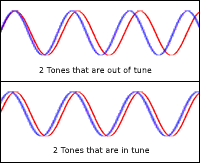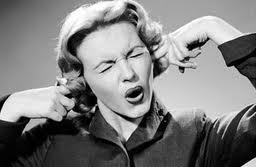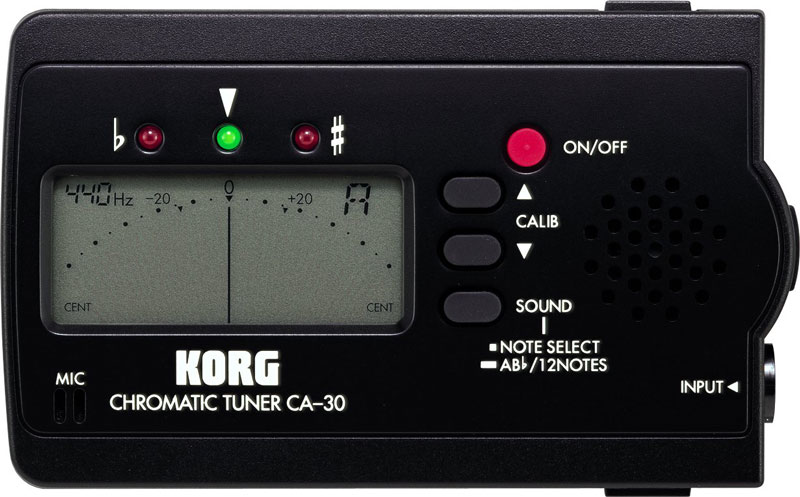A lot of the words we use have roots in music. To be in “harmony” with something means to be in accord with it, but “harmony” also refers to simultaneous musical notes that are in accord with each other or sound pleasing together. We use the word “orchestrate” to mean arranging or putting something together, yet it originally meant arranging music for an orchestra.
Being “in tune” means to be in agreement or in harmony with something or someone else. People say they’re in tune with each other when they’re thinking along the same lines, or people feel like they’re in tune with the universe when things are going well for them. In music, being “in tune” means having correct pitch or intonation for each note you play or sing.
Being In Tune: All musical notes are at the correct intervals, and none are flat or sharp.
Pitch, Sound Waves, Frequency, and Hertz
To understand correct pitch, you have to know how pitch it measured. This is where it gets a bit technical. Pitch is the quality of sound that we distinguish as high or low, and every pitch is made up of sound waves. Sound waves oscillate in repeated cycles with a certain number of wave cycles per second, and this is called the sound frequency. Frequency is measured in Hertz (Hz), which defines exactly how many times these wave cycles repeat per second. 1 Hz would have 1 oscillation of sound waves per second while 1000 Hz would have 1000 oscillations of sound waves per second. How does this affect the sound? A pitch of a higher Hz will sound higher because the sound waves are oscillating faster, while a pitch of a lower Hz will sound lower because the sound waves are oscillating slower. For example, if you were to make a sound that had a frequency of 430 Hz and then one that had a frequency of 440 Hz, the first one would sound slightly lower than the other. They would sound close to each other, but not the same. In other words, they would be “out of tune” with each other.
Hopefully that all made some sense to you! Here’s a simpler summary: pitches or sounds are measured by Hz, and to be in tune with a particular pitch, you have to make a pitch that has the same Hz.
A440 (Pitch Standard)
A440 refers to the musical tone A at 440 Hz. This is A4 on the piano. A440 is the general music standard for tuning and is generally accepted as the correct pitch to match. This means that everyone playing music should try to match A440 exactly so that everyone sounds in tune with each other. A whole group of players can choose to tune to A432 if they want to, and so long as they sound in tune with each other, the performance will sound pleasant. But the common standard we musicians tune to is A440.

Sounding “Flat” or “Sharp”
When you’re out of tune, you will sound either “flat” or “sharp”. Being flat simply means that your sounded pitch is lower than it should be (it has a lower Hz than it should). Being sharp means that your sounded pitch is higher than it should be (it has a higher Hz than it should). As you raise it or lower it to bring it closer to A440 or whatever pitch you’re trying to match, when you eventually match it exactly, you’ll be in tune.
Matching Pitch
Most think that to be in tune, you must have someone else to tune to. For example, if your friend is playing an “A” on the piano and you’re playing an “A” on your violin, then you’re “in tune” if they sound the same and “out of tune” if they don’t. This is a completely accurate scenario, but a better way of looking at it is that there’s a reference point, a perfect intonation, that BOTH are trying to match (typically A440). Even if you’re playing by yourself — even if you aren’t making music with someone else — you can still be out of tune. If you play an “A” at one point and then play a flat A later, or if you play a flat B or a sharp F, you’re playing out of tune.
Learning to Tune
 Now that you know all this about tuning, how do you do it? Each instrument has a unique way of adjusting it so that you sound more in tune, but most of learning to play or sing in tune has to do with your musical ear. Learning to tune is somewhat difficult and takes time. Your musical ear needs training and experience to be able to recognize when you’re in tune or out of it. If you’ve ever heard an out of tune piano or a singer who can’t carry a tune, you know that being out of tune can sound pretty bad! So it’s always the goal to learn to be in tune when making music so that your music sounds beautiful and natural to the human ear.
Now that you know all this about tuning, how do you do it? Each instrument has a unique way of adjusting it so that you sound more in tune, but most of learning to play or sing in tune has to do with your musical ear. Learning to tune is somewhat difficult and takes time. Your musical ear needs training and experience to be able to recognize when you’re in tune or out of it. If you’ve ever heard an out of tune piano or a singer who can’t carry a tune, you know that being out of tune can sound pretty bad! So it’s always the goal to learn to be in tune when making music so that your music sounds beautiful and natural to the human ear.
Ear training, where I help you train your musical ear, is an essential part of all of my music lessons. When you start learning how to tune, you’ll first learn to match the general tone – for example, if I were to sing a “C”, you’d be able to sing a “C” even though it might be a bit flat or sharp. You’ll also learn how to tell the audible difference between a B and a C, an A and a G, a G and a D, and so forth. Next, you can try using a digital tuner to find out just how in tune or out of tune you are for each note you play. (Bear in mind that just because you play a perfectly in tune C, it does not mean that all the rest of the notes you play will sound in tune, nor does it mean you’ll be in tune the next time you play that same C.) Ultimately, your ear will be begin to recognize the subtle differences in sound frequency, and you’ll be able to adjust by sound only. Professional musicians often adjust their tuning constantly throughout a performance.
Tuning Is A Constant Process, and It’s Really Important!
This is a never-ending part of making music. Musicians are constantly tuning because there are so many factors that affect whether or not you’re in tune. Depending on the temperature of the room, the way the instrument is handled, how the others around you are playing, how you’re playing that day, and many other factors, your tuning can change over the course of a very short period of time. Musicians must constantly keep their ears in check to determine if they’re still in tune. Untuned instruments produce discordant sounds with negative interferences; perfectly tuned instruments will sound harmonious and complementary as they make their music. Solo performers who are in tune will sound harmonious with their own music. I cannot overstate how important it is to play and sing in tune! It’s so important that people have created Auto-Tune devices to alter pitches so that they sound in tune. Personally, I think that Auto-tuning sounds fake and synthesized and is a poor excuse for not learning to perform in tune. (I do recognize that Auto-tune may have useful applications but in general, I feel it has contributed to laziness in many performing musicians.) While no one is perfect at performing in tune 100% of the time, a practiced and skilled musician should be in tune the vast majority of the time. Being in tune makes a huge difference in the quality of your sound and the quality of your performance. With good practice and good ear training, you can develop your musical ear so that your music sounds perfectly in tune.



This is a very nice essay with a lot of work done to explain something very technical to a layman readership. I’m an educator as well, and this correctly unpacks information well-suited to a middle school reading level. I would like to fairly use this information, making sure the source is explicitly referenced in the reading. Thank you!